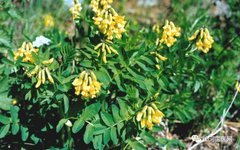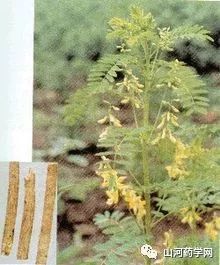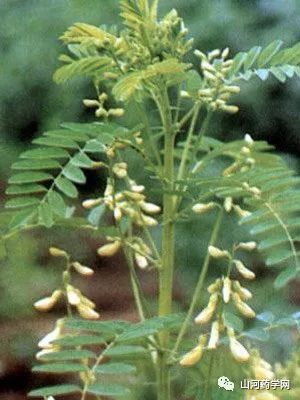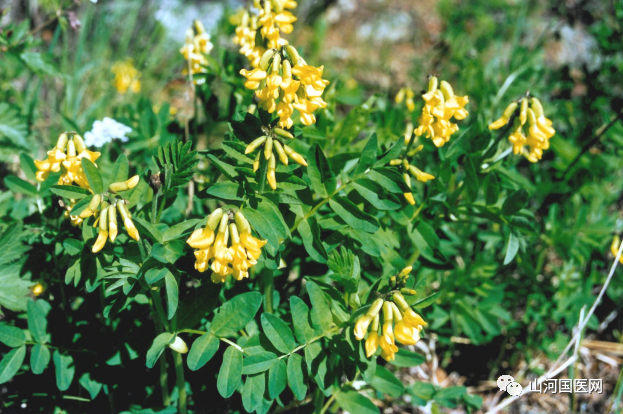| Huang QiHuánɡ Qí | |
|---|---|
|
|
|
| Alias | Mian Qi, Mian Huang Qi, Huang Qi |
| Functions | Tonifies Qi and stabilizes the exterior, promotes tissue regeneration. Indicated for deficiency with spontaneous sweating, chronic diarrhea, prolapse of the rectum, uterine prolapse, chronic nephritis, deficiency with edema, chronic ulcers, and non-healing sores. |
| English Name | RADIX ASTRAGALI |
| First Recorded In | |
| Toxicity | |
| Meridians | Lung Meridian, Spleen Meridian |
| Nature | Warm |
| Taste | Sweet |
Huang Qi, also known as Huang Qi, refers to a plant and medicinal material. The plant Huang Qi is found in Inner Mongolia, Shanxi, Gansu, Heilongjiang, and other regions, and is a nationally protected plant. The medicinal material Huang Qi is derived from the roots of the leguminous herb Mongolian Astragalus (Astragalus membranaceus) and membranous pod Astragalus (Astragalus mongholicus), which has the functions of tonifying Qi, stabilizing the exterior, promoting diuresis and reducing edema, and promoting tissue regeneration. Huang Qi has a medicinal history of over 2000 years. Modern research shows that Huang Qi contains saponins, sucrose, polysaccharides, various amino acids, folic acid, and trace elements such as selenium, zinc, and copper. It has been shown to enhance immune function, protect the liver, promote diuresis, exhibit anti-aging properties, resist stress, lower blood pressure, and has broad antibacterial effects. However, it should be avoided in cases of excess exterior pathogens, Qi stagnation with dampness, food stagnation, initial stages of abscesses, or in cases of Yin deficiency with Yang excess.
Pinyin Huánɡ Qí
English Name Radix Astragali
Alias Mian Huang Qi
Source The root of the leguminous plant Mongolian Astragalus (Astragalus membranaceus Bge. var. mongholicus (Bge.) Hsiao). Harvested in spring and autumn, the roots are cleaned of soil, fibrous roots, and root tips, then dried until 60-70% dry, bundled straight, and then fully dried.
Plant Morphology Perennial herb. The stem is erect and branched at the top. The odd-pinnate compound leaves are alternate, with 12-18 pairs of leaflets; the leaflets are broadly oval or oval-shaped, covered with soft hairs underneath; stipules are lanceolate. The racemose inflorescence is axillary; the calyx is bell-shaped, densely covered with short soft hairs, with 5 lobes; the corolla is yellow, with the standard petal being oblong-ovate, and the wing and keel petals both have long claws; there are 10 stamens, in two bundles; the ovary has a long stalk. The pod is membranous, semi-ovate, and hairless. The flowering period is from June to July, and the fruiting period is from July to September.
Habitat Distribution Grows in sunny grasslands and hillsides. Mainly produced in Inner Mongolia, Shanxi, and Heilongjiang; now widely cultivated.
Characteristics The root is cylindrical, some branched, thicker at the top, slightly twisted, 30-90 cm long, and 0.7-3.5 cm in diameter. The surface is light brown to light brownish-yellow, with irregular longitudinal wrinkles and horizontal lenticels; the cork easily peels off, exposing the yellow-white cortex, with some visible reticulate fiber bundles. The texture is tough, with a strong fibrous cross-section. The aroma is mild, with a slightly sweet taste and a bean-like odor.
Chemical Composition Contains flavonoids such as calycosin, 3-hydroxy-9,10-dimethoxyphenanthrene, and also contains astragalosides I, V, and III.
Properties and Indications Tonifies Qi and stabilizes the exterior, promotes diuresis, and tissue regeneration. Used for Qi deficiency, fatigue, chronic diarrhea, prolapse, spontaneous sweating, edema, uterine prolapse, chronic nephritis with proteinuria, diabetes, and non-healing sores.
Formulas 1. For urinary retention: Use 2 qian of Huang Qi, add 2 bowls of water, decoct to 1 bowl, and take warm. Reduce for children.
2. For jaundice: Use 2 liang of Huang Qi and 1 liang of Magnolia, grind finely. Take a small amount with wine three times a day.
3. For leukorrhea: Use 0.5 liang of salt-fried Huang Qi and 1 liang of Poria, grind finely. Take 1 qian each time.
4. For chronic fatigue and thirst: Use 6 liang of Huang Qi, half raw and half steamed with salt water; also use 1 liang of licorice, half raw and half charred. Grind both together. Take 2 qian twice a day. This formula is called “Huang Qi Liu Yi Decoction”.
5. For constipation in the elderly: Use 0.5 liang each of Huang Qi and dried tangerine peel, grind finely. Also use 1 handful of hemp seeds, crush, add water to extract juice, decoct until half dry, mix in 1 spoon of honey, then boil again, and add the powdered Huang Qi and dried tangerine peel to mix and take. Two doses can relieve constipation. Can be taken regularly.
6. For blood in urine: Use equal parts of Huang Qi and Coptis, grind into powder, and make into pills the size of green beans. Take 30 pills each time.
7. For scanty urination: Use equal parts of Huang Qi and ginseng, grind into powder. Also use 4-5 slices of radish, add 2 liang of honey, slightly charred, and dip in the powdered medicine to eat, taking with salt water.
8. For vomiting blood: Use 2.5 qian of Huang Qi and 5 qian of purple-backed duckweed, grind into powder. Take 1 qian with ginger honey water.
9. For coughing with pus and blood, and dry throat (this is due to deficiency heat, do not take cool medicines): Use 4 liang of Huang Qi and 1 liang of licorice, grind into powder. Take 2 qian with hot water.
10. For lung abscess: Use 2 liang of Huang Qi, grind finely, and take 2 qian decocted in soup. Can be taken 3-4 times a day.
11. For paronychia (red flesh protruding at the edge of the toenail): Use 2 liang of Huang Qi and 1 liang of mushroom, soak in vinegar overnight, add 5 liang of lard, simmer on low heat to make 2 liang. Strain and apply the fat to the sore three times a day.
12. For restless fetal movement (abdominal pain, yellow discharge): Use 1 liang each of Huang Qi and Chuanxiong, 1 handful of glutinous rice, and 1 liter of water, boil until half is left. Take in portions.
13. For damp itching: Use Huang Qi, stir-fried in wine, ground finely, and dip in cooked pig heart to eat, effective.
Basic Information
Botanical Name
1. Astragalus membranaceus (Fisch.) (membranous pod Astragalus)
2. Astragalus membranaceus (Fisch.) Bge. var. mongholicus (Bge.) Hsiao (Mongolian Astragalus)
Latin Family Name: Leguminosae
Chinese Family Name: Leguminosae
Latin Genus Name: Astragalus
Protection Level: 3
Chinese Medicine Name: Huang Qi
Chinese Pinyin: huáng qí
English Name: Milkvetch Root
Chinese Medicine Latin Name: RADIX ASTRAGALI
Complete List of Aliases
Aliases: Mian Qi, Mian Huang Qi, Huang Qi, Huang Qi, Arrow Qi, Arrow Huang Qi, Inner Mongolia Huang Qi, Wang Sun, Dai Qi, Dai Shan, Dai Shen, Du Shen, Shu Zhi, Bai Ben, Bai Yao Mian, Bai Yao Mian, Tu Shan Bao Zhang Gen, Du Gen, Da Chou, Er Ren Tai, Da You Qi, Meng Qi, Yuan Qi, Hong Lan Qi, Bai Pi Qi, Hei Pi Qi, Membranous Pod Astragalus, Northeast Huang Qi, Inner Mongolia Huang Qi, Chong Zheng Qi, Wuchuan Qi, Pao Tai Qi, Hunyuan Qi.
Product Name: Bei Huang Qi: also known as Bei Qi, Northeast Huang Qi, Bu Kui Qi, Guan Bu Kui Qi, Guan Qi, Hei Pi Qi. Most are the roots of the plant membranous pod Astragalus, with a small portion from the roots of Inner Mongolia Huang Qi. Mainly produced in Heilongjiang, Inner Mongolia, etc. of high quality. Due to different production areas, it is also divided into Ningguta Qi, Honglan Qi, Heishitan Qi, Zhengkou Qi, etc.
Bei Kou Qi: also known as Kou Qi, Zheng Kou Qi, Zheng Qi, Kou Huang Qi. The root of Inner Mongolia Huang Qi. Belongs to Bei Huang Qi. In ancient times, it was often distributed through Dushi Kou, hence the name.
Mian Huang Qi: also known as Mian Qi, Ximian Qi, Original Qi, Bai Pi Qi, Arrow Huang Qi, Arrow Qi. Includes Dalan Qi, Hunyuan Qi, Wuchuan Qi, Zhuang Qi, Xihuang Qi, etc. Refers to those produced in Gansu Dingxi, Shanxi Mianshan, etc. Most are the roots of Inner Mongolia Huang Qi, with a small portion from membranous pod Astragalus. High quality. Due to its long roots, resembling arrow shafts, it is also called Arrow Qi and Arrow Huang Qi.
Xihuang Qi: also known as Western Qi. Refers to those produced in Shanxi Hunyuan, Yangjiao, Shanyin, Tianzhen, etc. High quality. It is a commonly used genuine product.
Ku Huang Qi: also known as Kulun Huang Qi, Kulun Qi, Ku Qi. Refers to those produced in the Kulun area of Inner Mongolia.
Hong Qi: also known as Jin Qi, Yan Huang Qi.
All are characterized by thick, long roots, few wrinkles, sufficient powdery texture, solid and fibrous, sweet taste, and no hollowness or black heart.
Prescription Names: Huang Qi, Mian Qi, Mian Qi, Kou Qi, Bei Qi, Sheng Huang Qi, Chao Huang Qi, Zhi Huang Qi, etc.
In prescriptions, Huang Qi, Mian Qi, Mian Qi, Kou Qi, and Bei Qi all refer to raw Huang Qi. It is the original medicinal material after impurities are removed, sliced, and used raw for medication.
Chao Huang Qi refers to Huang Qi slices stir-fried in bran until deep yellow, screened out and cooled for use in medicine. It enhances the effects of tonifying the spleen and harmonizing the stomach.
Zhi Huang Qi, also known as honey-fried Huang Qi, is made by mixing Huang Qi slices with honey, stir-frying until not sticky, then cooling for use in medicine. It enhances the effects of tonifying Qi and moistening the lungs.
Medicinal Material Source
1. Source of Medicinal Material
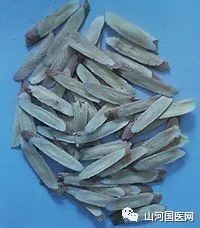
 Huang Qi (Image 2) is the root of the leguminous plants Mongolian Astragalus and membranous pod Astragalus. In addition to these two species, several other Astragalus species, such as Helan Mountain Huang Qi, Chuan Huang Qi, Qinling Huang Qi, Bai Qi, Jin Yi Huang Qi, and Multi-flowered Huang Qi, are also used as Huang Qi in medicine, but their quality is slightly inferior. The suitable production areas for Huang Qi are Inner Mongolia, Gansu, Ningxia, Shanxi, Hebei, and Shaanxi, with Inner Mongolia Wuchuan Huang Qi being of the best quality, with various effective component indicators exceeding national standards. Miaoyutang Huang Qi slices are the best quality among Huang Qi.2. Historical Records: Huang Qi was first recorded in the Shennong Bencao Jing. In ancient times, it was written as Huang Qi. Li Shizhen explained its name in the Bencao Gangmu as: “Qi means long. Huang Qi is yellow in color, and is the best among tonifying medicines, hence the name.” The Bencao Huiyan states: “Huang Qi can tonify the lungs and strengthen the spleen, stabilize the exterior, and expel wind and toxins…” The Bencao Fengyuan states: “Huang Qi can tonify the five organs, treat pulse stringing, spontaneous sweating, drain Yin fire, and eliminate lung heat; if there is no sweating, it will occur, and if there is sweating, it will stop.” Chinese pharmacists have inferred and used Huang Qi as a good medicine for enhancing capacity and resisting diseases for over 2000 years. Western traditional pharmacists have recently begun to focus on and study the use of Huang Qi to reduce the side effects of chemotherapy.1. The Bencao discusses Huang Qi: Huang Qi, sweet in taste, slightly warm in nature, thin in Qi but rich in flavor, can ascend and descend, is the Yang among Yangs, and is non-toxic. It specifically tonifies Qi. It enters the Taiyin, Foot Taiyin, and Hand Shaoyin meridians. Its functions are numerous, but its unique effect is especially in tonifying blood. Huang Qi is the holy medicine for tonifying Qi; how can it uniquely tonify blood? Qi is formless, while blood is form. Form cannot be quickly generated; it must rely on formless Qi to generate it. Huang Qi used with Dang Gui can assist in blood generation. Dang Gui can generate blood; why use Huang Qi? It is not known that blood tonics generate blood slowly, while Qi tonics generate blood quickly. Moreover, when Qi and blood tonics are combined, blood receives Qi and generates quickly, so there is no doubt.2. In TCM, the famous physician Tao Hongjing said: “Huang Qi is first produced in Longbai, yellow-white in color, sweet and beautiful, and is now also difficult to obtain.” This refers to wild Huang Qi from Gansu. Among Huang Qi products, wild varieties, except for the three types of Guan Qi (Bu Kui Qi, Ningguta Qi, Zheng Kou Qi) produced in Northeast China, are the best, with Gansu wild Huang Qi being the best. Due to the scarcity of wild varieties, they are cultivated in various provinces and regions in China.3. Chemical Composition: Contains flavonoids such as calycosin, 3-hydroxy-9,10-dimethoxyphenanthrene, and also contains astragalosides I, V, and III (astragaloside I, V, III). Huang Qi contains sucrose, glucuronic acid, Huang Qi polysaccharides A, B, C, D, mucilage, various amino acids, bitter compounds, Huang Qi saponins, choline, folic acid, flavonoid compounds, and various trace elements such as selenium, silicon, zinc, cobalt, copper, and molybdenum.4. Properties and Indications: Huang Qi has the effects of benefiting Qi, stabilizing the exterior, restraining sweating, promoting tissue regeneration, and diuresis. It is used to treat Qi deficiency, fatigue, chronic diarrhea, prolapse, blood in urine, and chronic nephritis with proteinuria, diabetes, and non-healing sores.5. Compatibility and Contraindications: It is contraindicated in cases of excess exterior pathogens, Qi stagnation with dampness, food stagnation, initial stages of abscesses, or in cases of Yin deficiency with Yang excess.6. Dosage and Administration: 10-30g. Store in a ventilated, dry place, protect from moisture and pests.
Huang Qi (Image 2) is the root of the leguminous plants Mongolian Astragalus and membranous pod Astragalus. In addition to these two species, several other Astragalus species, such as Helan Mountain Huang Qi, Chuan Huang Qi, Qinling Huang Qi, Bai Qi, Jin Yi Huang Qi, and Multi-flowered Huang Qi, are also used as Huang Qi in medicine, but their quality is slightly inferior. The suitable production areas for Huang Qi are Inner Mongolia, Gansu, Ningxia, Shanxi, Hebei, and Shaanxi, with Inner Mongolia Wuchuan Huang Qi being of the best quality, with various effective component indicators exceeding national standards. Miaoyutang Huang Qi slices are the best quality among Huang Qi.2. Historical Records: Huang Qi was first recorded in the Shennong Bencao Jing. In ancient times, it was written as Huang Qi. Li Shizhen explained its name in the Bencao Gangmu as: “Qi means long. Huang Qi is yellow in color, and is the best among tonifying medicines, hence the name.” The Bencao Huiyan states: “Huang Qi can tonify the lungs and strengthen the spleen, stabilize the exterior, and expel wind and toxins…” The Bencao Fengyuan states: “Huang Qi can tonify the five organs, treat pulse stringing, spontaneous sweating, drain Yin fire, and eliminate lung heat; if there is no sweating, it will occur, and if there is sweating, it will stop.” Chinese pharmacists have inferred and used Huang Qi as a good medicine for enhancing capacity and resisting diseases for over 2000 years. Western traditional pharmacists have recently begun to focus on and study the use of Huang Qi to reduce the side effects of chemotherapy.1. The Bencao discusses Huang Qi: Huang Qi, sweet in taste, slightly warm in nature, thin in Qi but rich in flavor, can ascend and descend, is the Yang among Yangs, and is non-toxic. It specifically tonifies Qi. It enters the Taiyin, Foot Taiyin, and Hand Shaoyin meridians. Its functions are numerous, but its unique effect is especially in tonifying blood. Huang Qi is the holy medicine for tonifying Qi; how can it uniquely tonify blood? Qi is formless, while blood is form. Form cannot be quickly generated; it must rely on formless Qi to generate it. Huang Qi used with Dang Gui can assist in blood generation. Dang Gui can generate blood; why use Huang Qi? It is not known that blood tonics generate blood slowly, while Qi tonics generate blood quickly. Moreover, when Qi and blood tonics are combined, blood receives Qi and generates quickly, so there is no doubt.2. In TCM, the famous physician Tao Hongjing said: “Huang Qi is first produced in Longbai, yellow-white in color, sweet and beautiful, and is now also difficult to obtain.” This refers to wild Huang Qi from Gansu. Among Huang Qi products, wild varieties, except for the three types of Guan Qi (Bu Kui Qi, Ningguta Qi, Zheng Kou Qi) produced in Northeast China, are the best, with Gansu wild Huang Qi being the best. Due to the scarcity of wild varieties, they are cultivated in various provinces and regions in China.3. Chemical Composition: Contains flavonoids such as calycosin, 3-hydroxy-9,10-dimethoxyphenanthrene, and also contains astragalosides I, V, and III (astragaloside I, V, III). Huang Qi contains sucrose, glucuronic acid, Huang Qi polysaccharides A, B, C, D, mucilage, various amino acids, bitter compounds, Huang Qi saponins, choline, folic acid, flavonoid compounds, and various trace elements such as selenium, silicon, zinc, cobalt, copper, and molybdenum.4. Properties and Indications: Huang Qi has the effects of benefiting Qi, stabilizing the exterior, restraining sweating, promoting tissue regeneration, and diuresis. It is used to treat Qi deficiency, fatigue, chronic diarrhea, prolapse, blood in urine, and chronic nephritis with proteinuria, diabetes, and non-healing sores.5. Compatibility and Contraindications: It is contraindicated in cases of excess exterior pathogens, Qi stagnation with dampness, food stagnation, initial stages of abscesses, or in cases of Yin deficiency with Yang excess.6. Dosage and Administration: 10-30g. Store in a ventilated, dry place, protect from moisture and pests.
Selected Formulas
1. Evidence-based formulas: 1. For urinary retention: Use 2 qian of Mian Huang Qi, 2 bowls of water, decoct to 1 bowl, take warm. Reduce for children. Zong Wei Lun.2. For jaundice: Huang Qi 2 liang, Magnolia 1 liang, grind finely. Take a small amount with wine three times a day. Zhou Hou Fang.3. For Qi deficiency leukorrhea: Use 0.5 liang of salt-fried Huang Qi and 1 liang of Poria, grind finely. Take 1 qian each time. Jing Yan Liang Fang.4. For chronic fatigue and thirst: Use 6 liang of Huang Qi, half raw and half steamed with salt water; also use 1 liang of licorice, half raw and half charred. Grind both together. Take 2 qian twice a day. This formula is called “Huang Qi Liu Yi Decoction”.5. For constipation in the elderly: Use 0.5 liang each of Huang Qi and dried tangerine peel, grind finely. Also use 1 handful of hemp seeds, crush, add water to extract juice, decoct until half dry, mix in 1 spoon of honey, then boil again, and add the powdered Huang Qi and dried tangerine peel to mix and take. Two doses can relieve constipation. Can be taken regularly.6. For blood in urine: Use equal parts of Huang Qi and Coptis, grind into powder, and make into pills the size of green beans. Take 30 pills each time. Sun Yong He.7. For scanty urination: Use equal parts of Huang Qi and ginseng, grind into powder. Also use 4-5 slices of radish, add 2 liang of honey, slightly charred, and dip in the powdered medicine to eat, taking with salt water. Yong Lei Fang.8. For vomiting blood: Use 2.5 qian of Huang Qi and 5 qian of purple-backed duckweed, grind into powder. Take 1 qian with ginger honey water. Sheng Ji Zong Lu.9. For coughing with pus and blood, and dry throat (this is due to deficiency heat, do not take cool medicines): Use 4 liang of Huang Qi and 1 liang of licorice, grind into powder. Take 2 qian with hot water. Xiyan Shang Fang.10. For lung abscess: Use 2 liang of Huang Qi, grind finely, and take 2 qian decocted in soup. Can be taken 3-4 times a day. Sheng Hui Fang.11. For paronychia (red flesh protruding at the edge of the toenail): Use 2 liang of Huang Qi and 1 liang of mushroom, soak in vinegar overnight, add 5 liang of lard, simmer on low heat to make 2 liang. Strain and apply the fat to the sore three times a day. Wai Tai Mi Yao.12. For restless fetal movement (abdominal pain, yellow discharge): Use 1 liang each of Huang Qi and Chuanxiong, 1 handful of glutinous rice, and 1 liter of water, boil until half is left. Take in portions. Fu Ren Liang Fang.13. For damp itching: Use Huang Qi, stir-fried in wine, ground finely, and dip in cooked pig heart to eat, effective. Zhao Zhen Ren Ji Ji Fang.
Therapeutic Value
Huang Qi is a commonly consumed natural product, produced in several provinces in North China. Huang Qi is derived from the dried roots of the leguminous plant Huang Qi or Inner Mongolia Huang Qi. In the Qing Dynasty, it was referred to as “the best among Qi-tonifying medicines”. There is a saying in the folk that “drinking Huang Qi soup regularly prevents diseases and maintains health”, meaning that regularly using Huang Qi to make soup or infusing it in water as tea has good preventive health effects. Huang Qi and ginseng are both excellent Qi tonics, with ginseng focusing on greatly tonifying the original Qi, reviving Yang, and is often used in emergencies such as collapse or shock, showing good effects. Huang Qi, on the other hand, primarily tonifies deficiency, often used for prolonged physical weakness, low speech, and weak pulse. Some people are prone to colds with weather changes, which is referred to in TCM as “exterior not solid”, and Huang Qi can be used to solidify the exterior, preventing frequent colds when taken regularly.Chinese pharmacists have inferred and used Huang Qi as a good medicine for enhancing capacity and resisting diseases for over 2000 years. Modern medical research shows that Huang Qi contains saponins, sucrose, polysaccharides, various amino acids, folic acid, and trace elements such as selenium, zinc, and copper. It enhances immune function, protects the liver, promotes diuresis, exhibits anti-aging properties, resists stress, lowers blood pressure, and has broad antibacterial effects. It can eliminate experimental nephritis proteinuria, enhance myocardial contractility, and regulate blood sugar levels. Huang Qi not only dilates coronary arteries, improves myocardial blood supply, and enhances immune function, but also delays the aging process of cells. Huang Qi is easy to consume, can be decocted into soup, made into paste, infused in wine, or added to dishes. Dosage: 30g per day, or up to 60g.
Consumption Methods
1. Use about 5-10 grams of Huang Qi daily, steep in boiling water for 10-20 minutes, and drink as tea, can be steeped multiple times.2. Use about 30 grams of Huang Qi daily, decoct in water, or drink the decoction as tea. Using 30 grams of Huang Qi and 15 grams of goji berries, decocted together, is especially effective for those with Qi and blood deficiency.3. Take about 50 grams of Huang Qi, decoct, and use the decoction to cook rice or porridge, resulting in Huang Qi rice or porridge, which is also very beneficial.4. Some people like to add Huang Qi when cooking meat, chicken, or duck to enhance the nourishing effect, which is also quite good.
Food Therapy
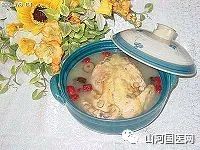
 1. Huang Qi and Ginseng Red Date Porridge: Huang Qi 15g, Ginseng 10g, Red Dates 30g, Glutinous Rice 100g. Huang Qi and Ginseng are decocted to extract the juice, then cooked with the latter two to make porridge.This formula uses Huang Qi and Ginseng to tonify the spleen and Qi, with red dates working synergistically. It is used for spleen deficiency, weak Qi, fatigue, spontaneous sweating, reduced appetite, or susceptibility to colds.2. Qi Ling Carp Soup: Huang Qi 50g, Poria 30g, 1 carp. Clean the carp, wrap Huang Qi and Poria in gauze, add water and cook, seasoning with ginger and salt. Drink the soup and eat the fish.This formula uses Huang Qi to tonify the spleen and Qi, promotes diuresis and reduces edema, Poria benefits the spleen and eliminates dampness, and carp nourishes the spleen and promotes diuresis. It is used for weak spleen Qi, edema, difficulty urinating, or proteinuria; also for elderly patients with weak Qi and difficulty urinating.3. Huang Qi Mountain Porridge: Huang Qi 30g, Chinese Yam 100g, Raw Rehmannia 15g. Huang Qi and Raw Rehmannia are decocted to extract the juice, and the yam is ground into powder; the juice is boiled, and the yam powder is sprinkled in, stirred, and cooked into porridge.This formula uses Huang Qi and Chinese Yam to tonify Qi and benefit the spleen, while Raw Rehmannia nourishes Yin and clears heat; all three can lower blood sugar. It is used for diabetes, Qi deficiency, and Yin deficiency, with thirst and dry mouth, and frequent urination.
1. Huang Qi and Ginseng Red Date Porridge: Huang Qi 15g, Ginseng 10g, Red Dates 30g, Glutinous Rice 100g. Huang Qi and Ginseng are decocted to extract the juice, then cooked with the latter two to make porridge.This formula uses Huang Qi and Ginseng to tonify the spleen and Qi, with red dates working synergistically. It is used for spleen deficiency, weak Qi, fatigue, spontaneous sweating, reduced appetite, or susceptibility to colds.2. Qi Ling Carp Soup: Huang Qi 50g, Poria 30g, 1 carp. Clean the carp, wrap Huang Qi and Poria in gauze, add water and cook, seasoning with ginger and salt. Drink the soup and eat the fish.This formula uses Huang Qi to tonify the spleen and Qi, promotes diuresis and reduces edema, Poria benefits the spleen and eliminates dampness, and carp nourishes the spleen and promotes diuresis. It is used for weak spleen Qi, edema, difficulty urinating, or proteinuria; also for elderly patients with weak Qi and difficulty urinating.3. Huang Qi Mountain Porridge: Huang Qi 30g, Chinese Yam 100g, Raw Rehmannia 15g. Huang Qi and Raw Rehmannia are decocted to extract the juice, and the yam is ground into powder; the juice is boiled, and the yam powder is sprinkled in, stirred, and cooked into porridge.This formula uses Huang Qi and Chinese Yam to tonify Qi and benefit the spleen, while Raw Rehmannia nourishes Yin and clears heat; all three can lower blood sugar. It is used for diabetes, Qi deficiency, and Yin deficiency, with thirst and dry mouth, and frequent urination.
Other Information
Protection of Huang Qi
StatusGradually endangered. Mainly distributed in northern China, it is a relatively precious medicinal material, with the root used for medicine. Due to long-term large-scale harvesting, the number of wild Huang Qi has sharply decreased in recent years. If protection and artificial breeding are not strengthened, there is a risk of extinction. Therefore, this plant is designated as a nationally protected plant.To protect wild resources, harvesting should be appropriately limited, and the harvesting season should be after the seeds have matured and fallen. Harvesting of young plants is strictly prohibited. To expand resources, cultivation or artificial planting of young plants should be vigorously developed, and then maintained in a semi-wild state until harvest.CharacteristicsHuang Qi is distributed in temperate and warm temperate regions of China and is a deep-rooted plant. It prefers cool climates, has strong drought and cold resistance, and is intolerant to heat and waterlogging. High temperatures often inhibit plant growth, and excessive soil moisture can lead to root rot. It grows best in deep, fertile, loose, and well-drained sandy soils; in clay soils, it grows slowly with many roots. It often grows at forest edges, shrublands, grasslands, and under sparse forests and meadows. The flowering period is from June to July, and the fruiting period is from July to September.Conservation ValueThe root of Huang Qi is used in medicine, often as a tonic, and can also be used as animal medicine, with a large sales volume. The 10-fold water infusion of the root has inhibitory efficiency against late blight in potatoes. Huang Qi also plays a role in soil and water conservation.Conservation MeasuresHuang Qi’s growing areas generally do not belong to nature reserves. To prevent its extinction, it is recommended that medicinal material purchasing departments determine the purchase volume based on specific local conditions and promote awareness among the public. During harvesting, attention should be paid to protecting seedlings, and mature plants should be appropriately retained to facilitate reproduction and sustainable use. The cultivation area should also be further expanded.
Blood Pressure Control Effects
Huang Qi is most suitable for treating patients with hypertension due to Qi and blood deficiency. Such patients often present with weak pulses, shortness of breath, fatigue, dizziness, neck stiffness, soreness in the lower back and knees, heat in the palms and soles, and high diastolic pressure that does not decrease. In clinical applications, it is often combined with Qi-tonifying and Yin-nourishing decoctions, using Huang Qi 30 grams, Nu Zhen Zi 25 grams, Sang Ji Sheng 25 grams, Niu Xi 10 grams, Ze Xie 5 grams, Gou Teng 20 grams, and Mu Li 30 grams, with adjustments based on accompanying symptoms. This formula is particularly effective for patients whose systolic pressure remains within normal values after taking various Western medications, but whose diastolic pressure remains below 100 mmHg.Chinese medicine experts have found that Huang Qi has a bidirectional effect on blood pressure; in clinical use, small doses raise blood pressure, while larger doses lower it. Therefore, when treating hypertension, Huang Qi should be used in doses above 30 grams, and patients with Qi deficiency and blood stasis can increase the dosage appropriately. For patients with hypertension and Yin deficiency, Huang Qi should be combined with Yin-nourishing herbs, with Huang Qi’s dosage slightly higher than that of the Yin-nourishing herbs. For patients with hypertension and coronary heart disease, Huang Qi should be combined with blood-activating and stasis-eliminating herbs, with Huang Qi’s dosage being double that of the blood-activating herbs. For patients with hypertension and neck pain, Huang Qi should be combined with Ge Gen, with a ratio of 2:1. For patients with hypertension and edema due to nephritis, Huang Qi should be combined with Fang Ji. For patients with hypertension and diabetes, Huang Qi should be combined with Shan Yao. Such combinations can treat both the root and the symptoms, improving efficacy. TCM believes that the processing methods of Huang Qi have different effects; raw Huang Qi promotes the exterior and tissue regeneration, while charred Huang Qi tonifies the internal organs, but it should be avoided in cases of high fever due to excess heat. Pregnant women should also avoid it. Additionally, Huang Qi has notable anti-cancer effects.
Veterinary Uses
It can induce the body to produce interferon, regulate immune function, promote antibody formation, and has stress-relieving effects. It is used for chicken infectious bursal disease, Marek’s disease, avian infectious laryngotracheitis, Newcastle disease, and can prevent avian influenza, as well as viral diseases such as infectious gastroenteritis in livestock, epidemic diarrhea, porcine reproductive and respiratory syndrome, and porcine circovirus infection, while also enhancing vaccine efficacy.
Legends of Huang Qi in Traditional Chinese Medicine
It is said that in ancient times, there was a kind-hearted old man named Dai Shan. He was skilled in acupuncture and was known for his kindness and humility, spending his life helping others. Later, he died while saving a child from falling off a cliff. The old man was thin, with a pale yellow complexion, and people respectfully called him “Huang Qi”. After his death, the herb that grew beside his grave, which was sweet in taste and had the effects of tonifying Qi, stopping sweating, promoting diuresis, and regenerating tissue, was named “Huang Qi” and used to treat many patients, becoming widely known in folk medicine.

